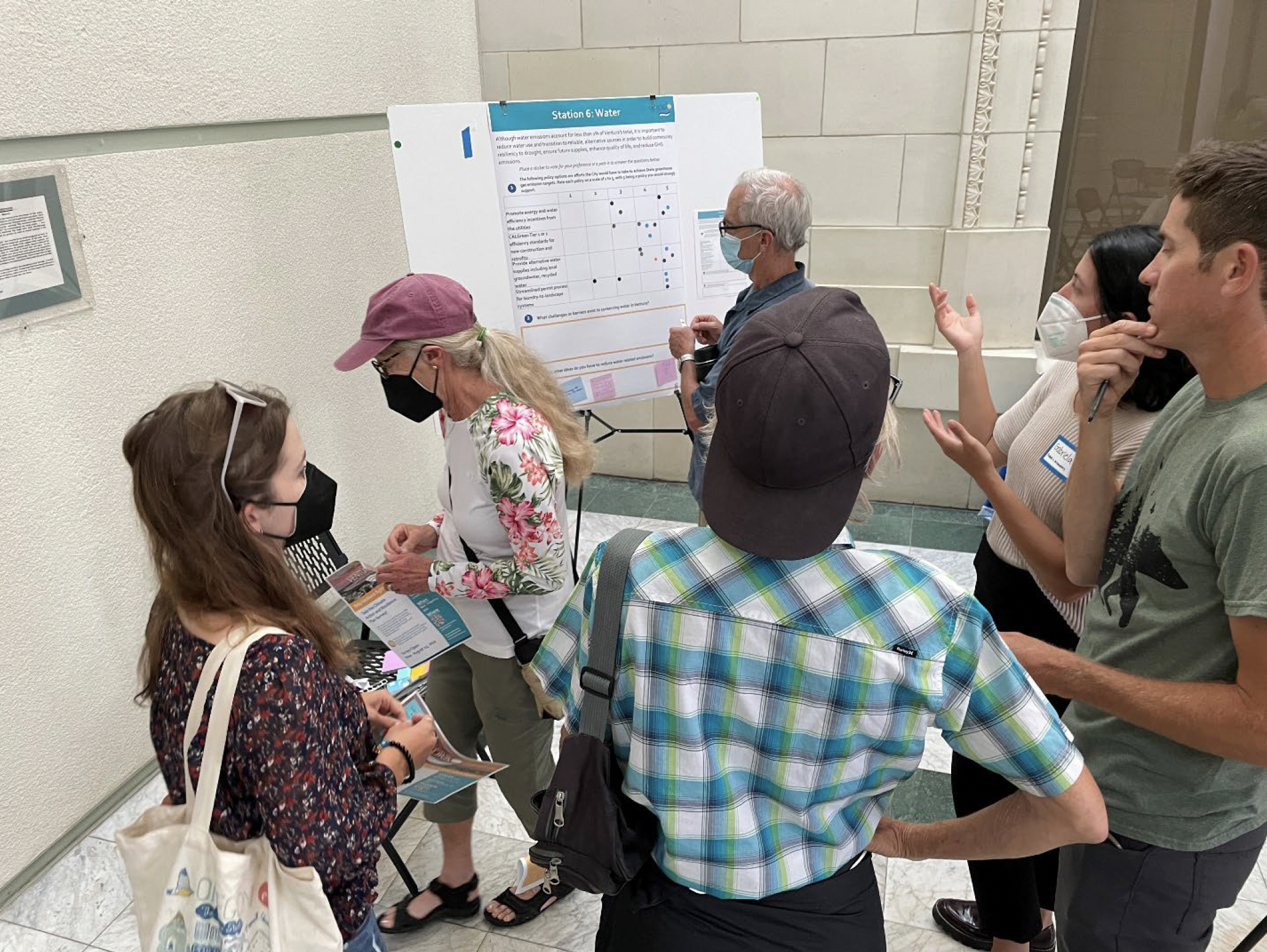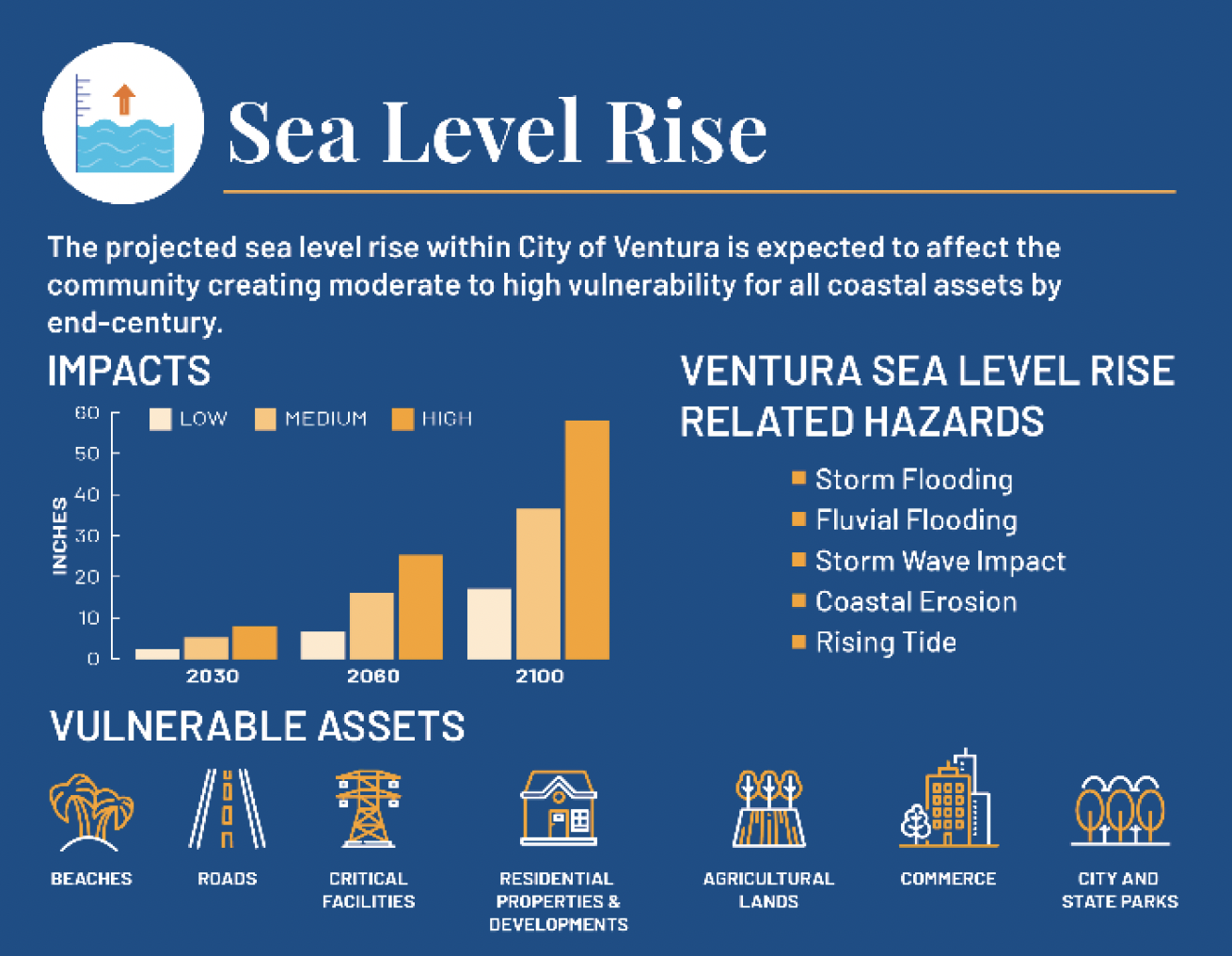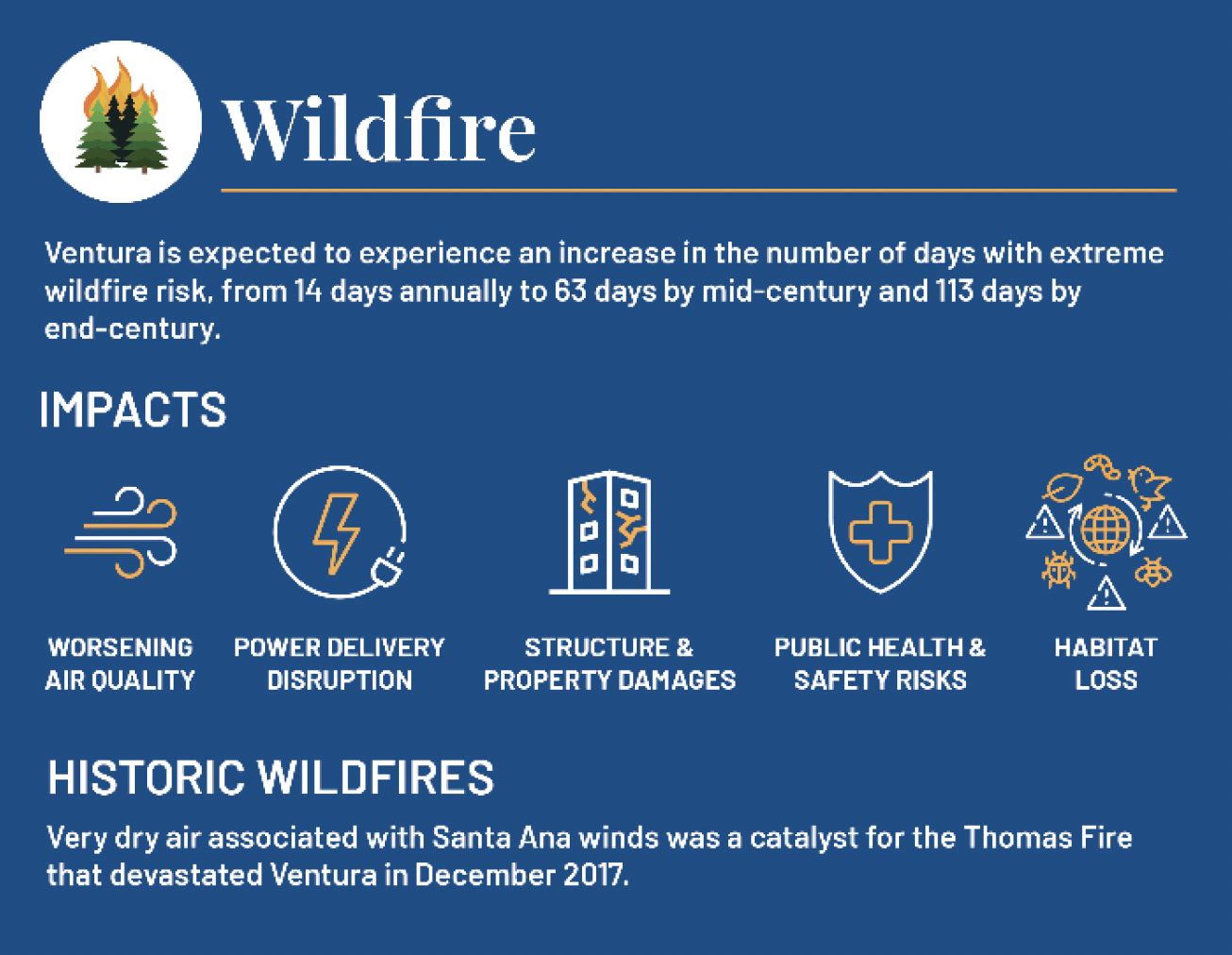City of Ventura Climate Action and Resilience Plan
Proposition 84 Wildfire and Resilience Planning Grant Case Study
Brief Summary
The City of Ventura Climate Action and Resilience Plan (CARP) is a document that guides day-to-day decision making and serves as a long-term vision for the City as the climate changes. It defines near-term goals for climate mitigation and adaptation and presents recommended strategies and actions to realize them based on technical analysis and input from the community. Upon full implementation of the strategies in the CARP, the City can achieve the State’s SB 32 greenhouse gas (GHG) reduction target of 40% reduction from 1990 levels and is on the pathway toward carbon neutrality by 2045.
The CARP development process was a partnership between City staff, community members, and a Raimi + Associates over an 18-month period. Work commenced in March 2021 and the plan was released for public review and City Council discussion in November 2022. The CARP was developed concurrently with the City of Ventura General Plan, Active Transportation Plan, and Local Coastal Plan updates. Developing the CARP in concert with these plans provided opportunities for innovative and integrated planning and climate mitigation and adaptation. Together, these plans promote multiple benefits, including sustainable infrastructure, climate mitigation, and social equity.
The key project deliverable was the Climate Action and Resilience Plan document. Technical deliverables throughout the process included a communitywide greenhouse gas inventory, forecast, and greenhouse gas reduction analysis; a vulnerability and adaptation assessment and dashboard; and a social vulnerability assessment.
Lead Agency and Partnerships
The lead agency for the project was the City of Ventura. Consulting services were provided by Raimi + Associates and Rincon Consultants, Inc. Central Coast Alliance United for a Sustainable Economy (CAUSE) assisted with community engagement focusing on the City’s Latinx communities.
Drivers
The CARP project was initiated in response to the 2017 Thomas Fire, a recent climate disaster in the city that overwhelmed existing firefighting capacity and destroyed over 1,000 structures despite decades of regional land use planning and enforced urban growth boundaries. The Thomas Fire highlighted wildfire resilience and recovery challenges for Ventura, including exposed infrastructure, evacuation bottlenecks, and impacts on outdoor workers.
Another driver of the project was to develop a qualified CAP for CEQA tiering. Setting targets in the CARP that are consistent with state goals – AB 32, SB 32, and EO B-55-18 - is a major step toward meeting the requirements of CEQA Guidelines section 15183.5 (b), which would allow new projects to determine significance under CEQA by assessing their consistency with the CARP.
Engagement Process
Due to the COVID-19 Pandemic, the CARP engagement process mixed virtual workshops, stakeholder interviews, and online surveys with in-person open houses and door-to-door canvasing in the city’s most disadvantaged and socially-vulnerable communities. CAUSE conducted targeted engagement with the city’s Latinx population, canvassing the city’s historically disadvantaged Westside and successfully garnered survey responses from Spanish-speaking residents. They also conducted two focus groups, one with Westside residents and one with youth, on barriers to implementing climate mitigation strategies and ways to ensure a just transition. Feedback from these engagement activities informed the GHG mitigation and climate adaptation measures in the CARP.
Climate Impact Area
The City is exposed to multiple climate change hazards: rising temperatures, drought, wildfire, landslides, riverine and stormwater flooding, air quality issues, and sea level rise. The CARP includes strategies to adapt to these hazards and reduce emissions 40% from 1990 levels by 2030 in the clean energy, buildings, transportation and land use, solid waste, and water sectors.
Sea Level Rise and Wildfire Images Source: Rincon Consultants
 Funding Source
Funding Source
The project was funded by a Proposition 84 grant and City funds. The total project budget was $237,820.
Research and Data
The City utilized the California Adaptation Planning Guide to guide the process of the CARP. Data to conduct the Climate Change Vulnerability Assessment was gathered from US Census via Social Explorer; Cal-Adapt; California’s Fourth Climate Change Assessment; California Healthy Places Index; and The Nature Conservancy’s Coastal Resilience Web Tool.
Challenges
The CARP’s co-development with other ongoing City planning projects was challenging because each project had slightly different timelines. For example, the CARP’s GHG reduction analysis and measures were related to parts of the City’s General Plan Update, Energy Action Plan, and Active Transportation Plan, which were all in process at the same time. However, consultants were able to move forward with the CARP by confirming key pieces of information with City staff and the other project consultants at critical points in the planning process.
Outcomes
The key project deliverable was the Climate Action and Resilience Plan, charting a clear and actionable path towards improved resilience and emission reduction. Technical deliverables throughout the process included a communitywide greenhouse gas inventory, forecast, and reduction analysis; a vulnerability and adaptation assessment and dashboard; and a social vulnerability assessment.
Replicability
The framework for the vulnerability assessment, the structure of the climate action and resilience strategies, and the agency and stakeholder engagement process can be easily modified to meet the specific criteria and needs of other cities. Supplementing traditional engagement methods with community-based organization support increases the accessibility of the information and inclusivity of the process.
Additional Resources
General Plan Update and CARP Project Website: https://www.planventura.com/
Further Information
Neda Zayer
Assistant Community Development Director
City of Ventura
Phone: (805) 515-9119
Email: nzayer@cityofventura.ca.gov

